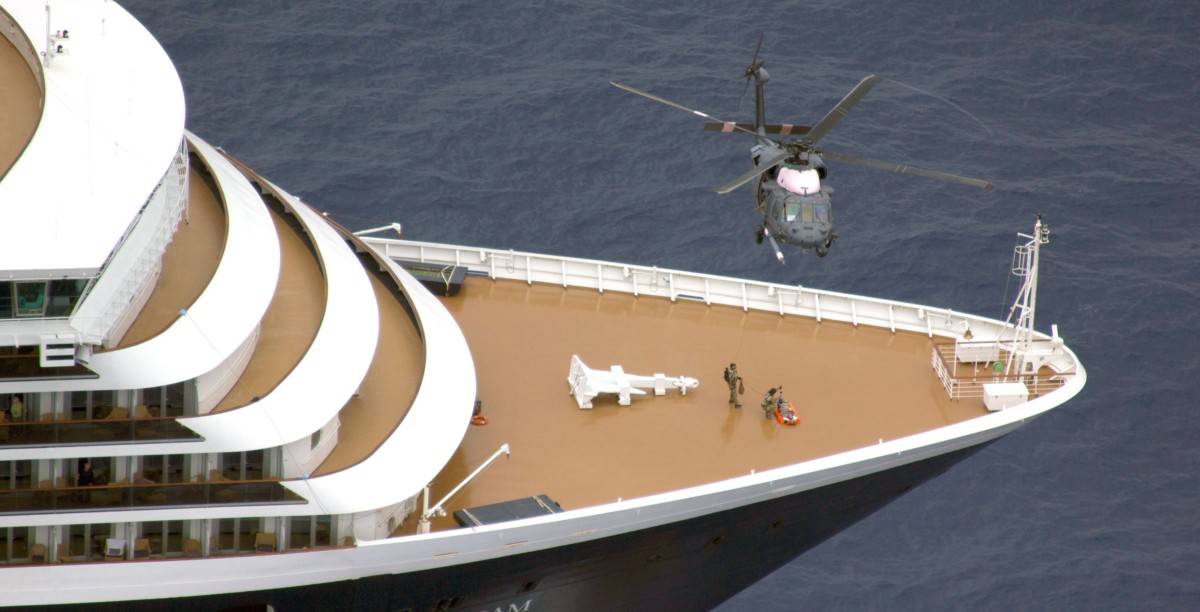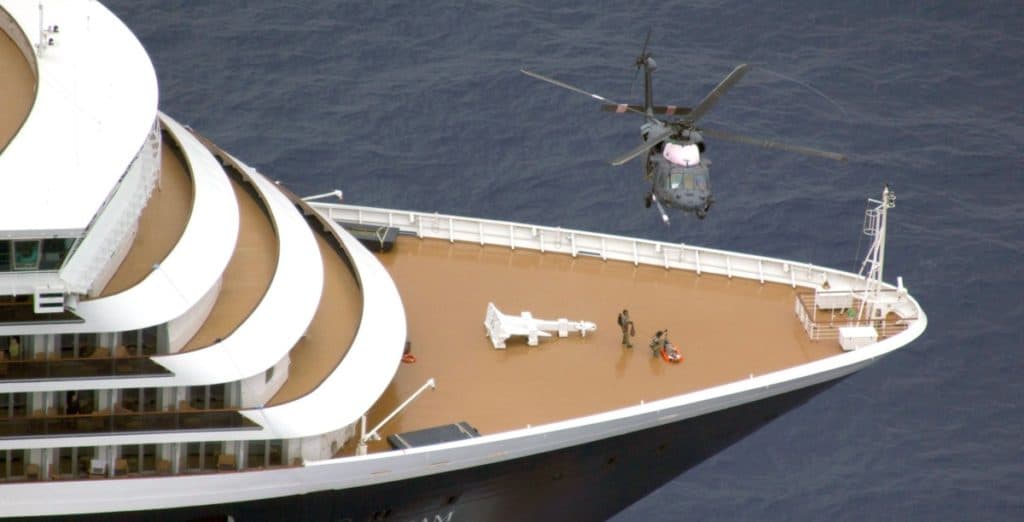
It is a common question asked by those in the cruising community and those who are thinking of taking a cruise but are not in the best of health. Many cruise ships have helipads built on them but does that mean a helicopter can land on them for tourist flights as well as medical evacuation?
Helicopters mostly hover over the helipad on ships to embark and de-embark passengers in emergency medical situations only. Landing a helicopter on a pitching and rolling ship is far more dangerous than winching. The majority of ship helipads cannot support the weight of large medevac helicopters.
Some passengers have seen helicopters sitting on cruise ships and may have even flown off a ship in one so let’s look at why some ships can land helicopters and others cannot.
Are There Cruise Ships That Helicopters Can Land On?
If you have been onto a cruise ship and noticed a helipad this might seem obvious as this is where a helicopter would land, but it is not that simple. Upon closer inspection of most helipads you will see a number painted on the pad:
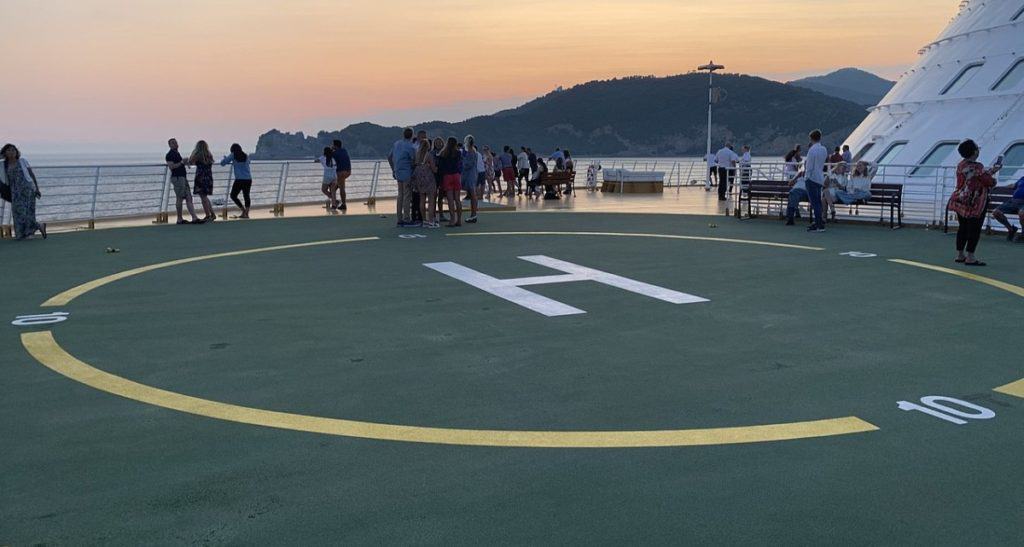
What this number signifies is the maximum weight, in thousands of pounds that the helicopter pad is designed and certified for. This example shows the pad is rated for helicopters up to 10,000 lbs.
Most of the Search and Rescue Helicopters around the world weigh the following: (Links To Wikipedia)
- HH-60 Jayhawk – U.S. Coast Guard = Empty Aircraft Weight: 14,500 lb (6,580 kg)
- Sikorsky S-92 – HM Coast Guard = Empty Aircraft Weight: 15,500 lb (7,031 kg)
- Leonardo CH-149 Cormorant = Canadian Forces = Empty Aircraft Weight: 23,149 lb (10,500 kg)
- Leonardo AW139 = Dutch Caribbean Coast Guard = Empty Aircraft Weight 8000 lb (3,630 kg)
These weights are empty weights, which means no fuel, no crew, and no rescue equipment. As you can see they would all be well over the maximum weight limit for the ship’s helipad once they are in an operational state.
Most of the world’s Search & Rescue helicopters are large, twin-engined helicopters that can carry large fuel loads to be able to reach a ship hundreds of miles off the coast. Smaller rescue helicopters are the only ones that will be light enough and small enough to be able to land on the ship providing it is close enough.
For those of you that have seen helicopters on a cruise ship, it is usually parked up in port, anchored off the shore, and has transported crews or executives to the ship. This is only possible when the ship is not moving and the seas are calm. It takes incredible skill, training, and practice to land a helicopter on a moving ship. Watch this video to see what I mean:
Although this video is in extreme sea states and the pitching and rolling on a cruise ship would be nowhere near this aggressive, landing a helicopter on any ship with even just a small swell is very difficult.
Helicopters fly best when flying into the wind. This will require the ship’s officers to maneuver the ship into the wind and maintain a set, slow speed so the helicopter can line up and land. This means putting the ship’s superstructure behind the pilot’s frontal view as most cruise ship helipads are built on the bow of the ship! This increases the risk of collision.
The most common way that helicopters can land on cruise ships is for ships purposely designed for discovery-type cruises. Ships that tour Alaska, the Arctic, the Antarctic, and the like can have dedicated helicopters that are used to ferry crew and passengers on excursions, and their main helipads are built on the stern of the ship.
This allows the pilot to approach from the stern, into the wind and able to match the speed and swell of the ship before touching down. This makes for much safer helicopter operations.
The helicopters used on these types of vessels are small, lightweight helicopters and have strict sea state and weather limitations on when they can operate.
The Scenic Eclipse is a perfect example of this. Carrying two of its own EC130 helicopters for passenger and crew use.
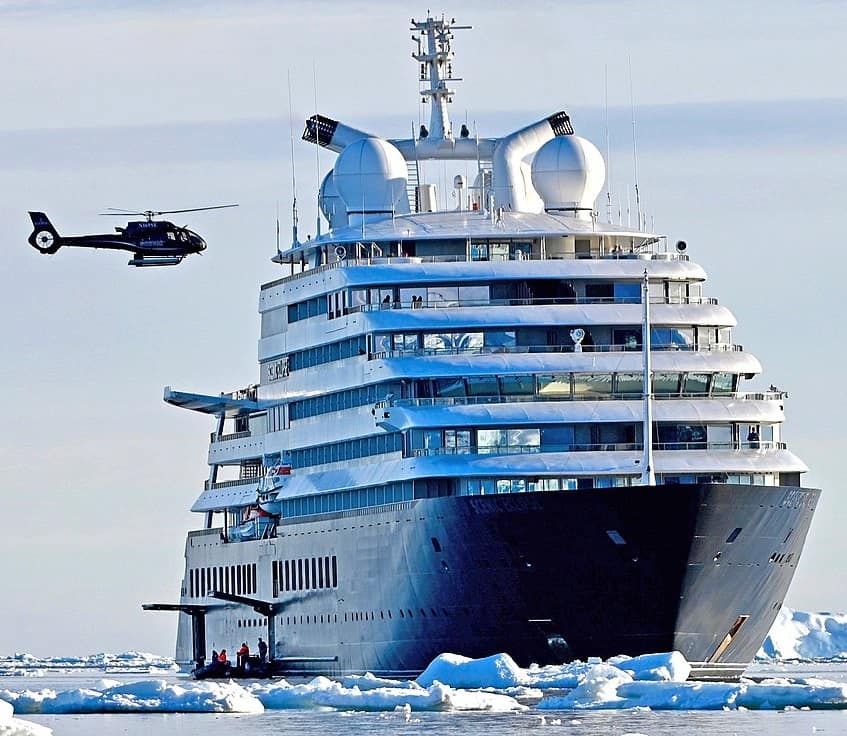
For the majority of the world’s cruise ships, there are many reasons why helicopters don’t generally land on them.

Join My Newsletter & Get Great Tips, Information and Experiences To Help You Become a Superb Pilot!
Why Don’t Helicopters Land On Cruise Ships?
We have already discussed the weight of a helicopter physically landing on a ship’s helipad, but its size also plays a factor. The space required to land a helicopter can be over 75ft in diameter for even the smaller helicopters. This is a lot of valuable real estate that the ship owners do not like to give up.
When a helipad is installed, it is usually used when a medevac is not in operation. Next time you go on a ship with a helipad, have a look around at all the items that need to be removed in order for a helicopter to even come close!
Deck furniture, garbage cans, banners & bunting, string lights, antennas, wires, barriers. All of these need to be removed to prevent them from being obstructions or becoming missiles when the rotor wash of a helicopter gets hold of them.
From a pilot’s point of view landing a helicopter on a moving ship is already a very difficult task, add to that tight confines, the superstructure being behind the helicopter, the presence of obstacles, and then doing this at night is just a huge list of high-risk factors that can be eliminated by one simple operation – Winching.
Why Do Helicopters Winch People Off Cruise Ships?
Winching an injured person off a cruise ship is a much safer alternative to trying to land a helicopter on it.
Rescue helicopter crews train for winching operations constantly because it provides the greatest margin of safety when used. A helicopter hovering over a ship provides the following increase in safety:
- Area required for winching can be far smaller – Less equipment to be removed
- Ships obstacles are below the aircraft
- Pilots have a better view of their position in relation to the ship
- Less rotor wash reaches the deck
- Pitching and rolling ships can be accessed easier
- Better escape options for the pilots if something goes wrong
- Easier for the ship’s crew to observe the helicopter
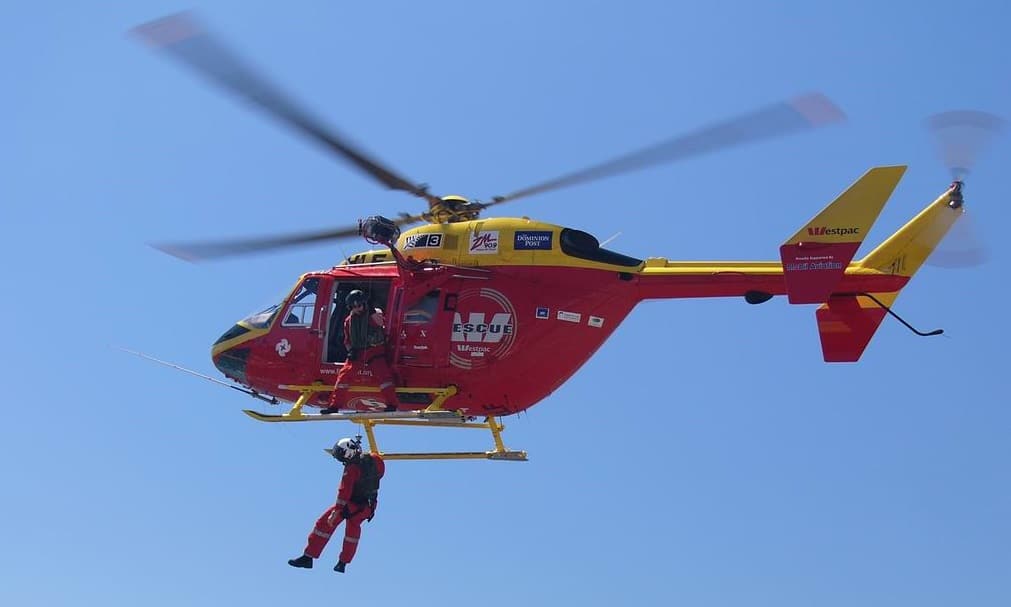
When a helicopter reaches a ship the chances are that this could be the first time the pilots have ever seen this ship and trying to land on an unfamiliar ship, especially at night can make the evacuation very risky.
By sending down trained medical crews on a winch to package the patient, the helicopter can move away from the ship and wait. This reduces not only the noise, wind, and dust created by the helicopter on the ship, but it dramatically reduces the chances of a collision.
Once the crew member and patient are ready for extraction, the helicopter will reposition over the winching area and winch them back on board. With highly trained crews and favorable weather conditions, this can be accomplished in minutes (minus the patient packaging).
To Finish
Emergencies happen on a regular basis on cruise ships all over the world. Well-trained ship and helicopter crews allow for rapid extraction of injured patients because of the winch.
Without a winch, having to land a helicopter on the ship may prove impossible if the aircraft, ship, or weather conditions are not suited leading to a long, agonizing wait for the injured person.
For ships that have regular helicopter operations, they are purposely designed with large, capable helidecks, minimal obstructions, built-in fire suppression systems, and strict operating weather minimums.
Flying off a ship for sight-seeing vs being medevac’d are two completely different types of flight operations and using the best tools and processes for the job allows everyone to stay safe!
If you are interested in taking a cruise I highly recommend you check out EmmaCruises.com! Emma is a cruising fanatic and uses her knowledge to help you save up to 60% when booking a cruise!
Be sure to check her out here:
Further Reading
If you found this article interesting and would like to keep reading, I highly recommend the following articles from my blog:

